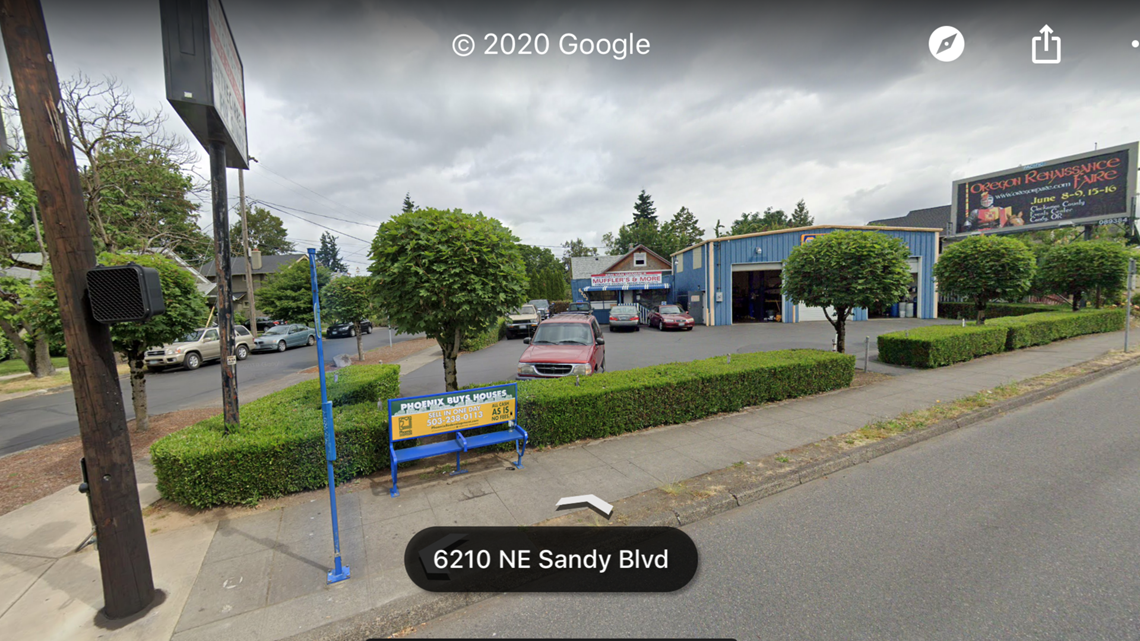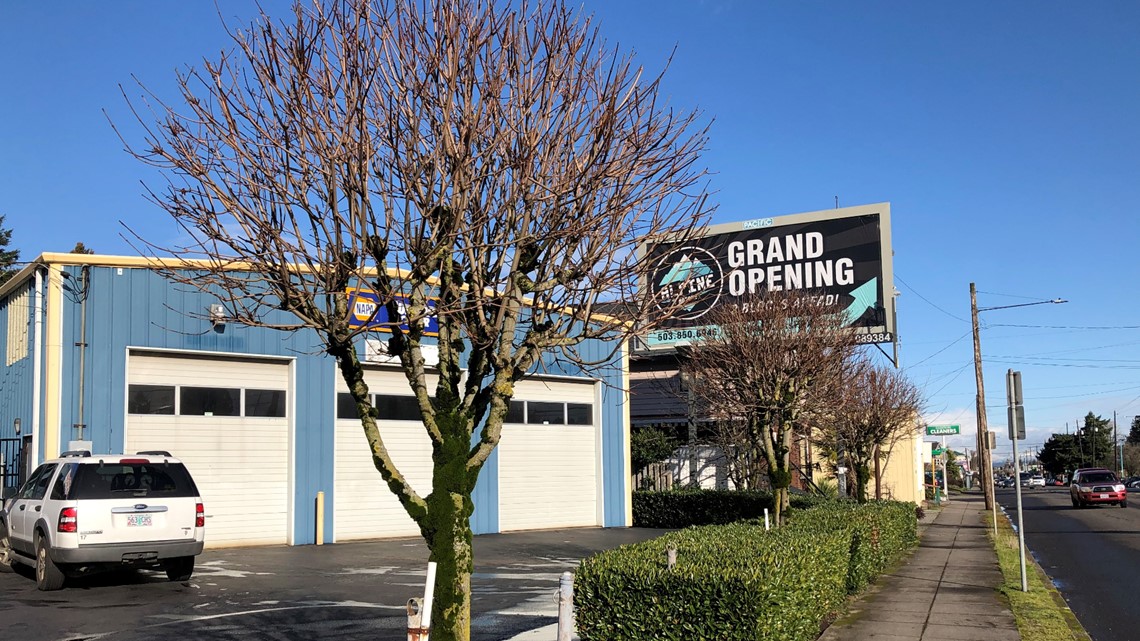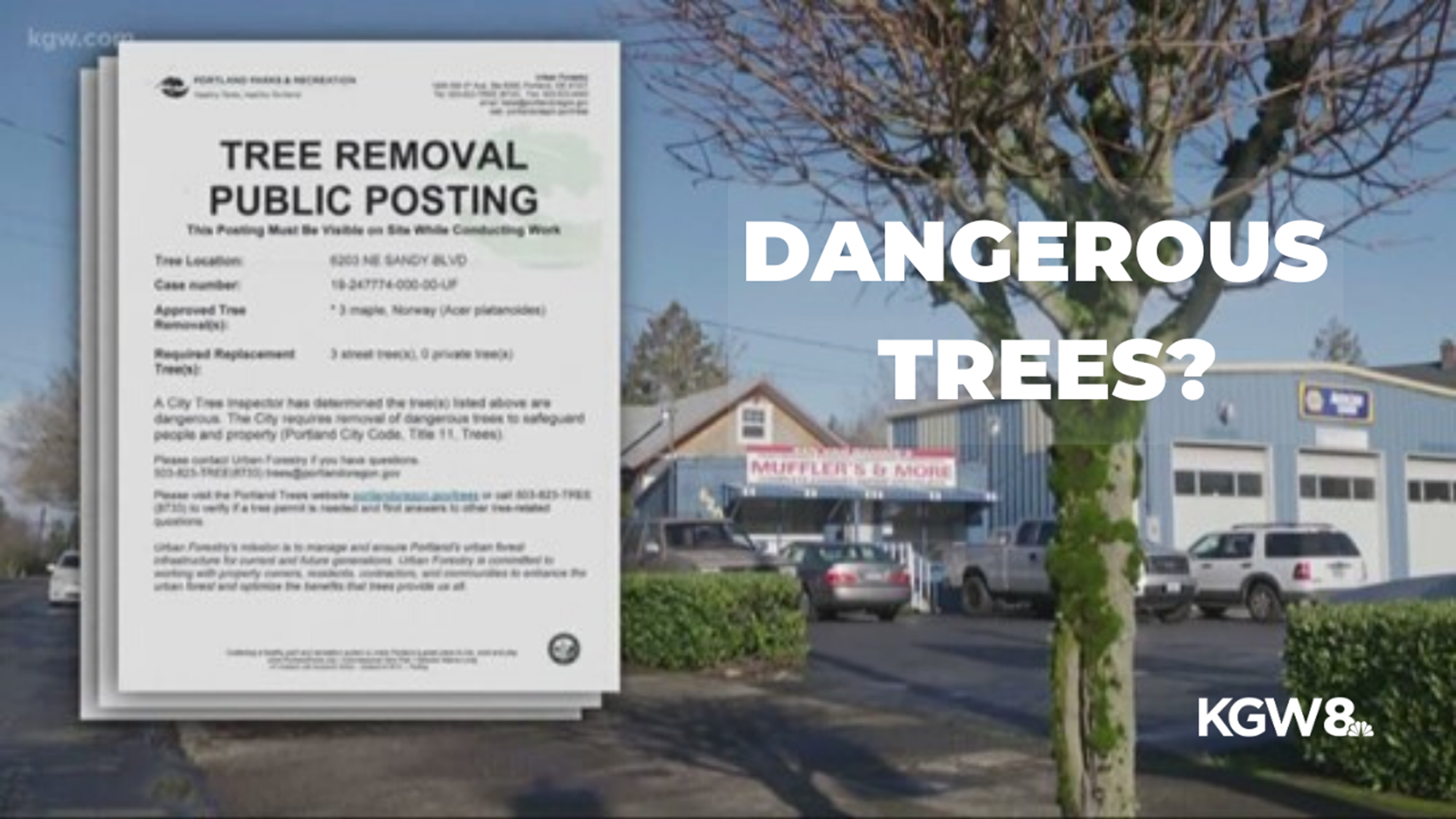PORTLAND, Ore. — Ken Van Damme’s Automotive is a fixture in Northeast Portland. He takes pride in his shop. The property is surrounded by nicely groomed hedges and small trees along Sandy Boulevard. So, when Van Damme got a notice from the city of Portland warning his trees were “dangerous” and needed to be removed, he was floored.
“You would think I committed a crime the way they acted,” said Van Damme.
The city’s Urban Forestry and Bureau of Development Services cited Van Damme for excessive pruning, called topping.
Officials required the small business owner pay a penalty, cut down his seven maple trees, grind out the stumps and plant new trees from a list approved by the city.


“I would imagine it is going to cost thousands- by the time you get the permitting, the equipment, dig them up, new trees. It’s going to cost a lot for a small business. It hurts,” said former owner Henry Franklin.
Franklin was the original owner, before selling the shop to Van Damme. He remembers planting the maple trees decades ago at the city’s request.
“In 1992 that was the law, you must do it,” explained Franklin.
The Norway Maple trees stand about 12-feet tall. Photos show they’re full of leaves each spring and summer.


The city gave Van Damme only a few weeks to respond by either correcting the violation or filing for an administrative review. The short deadline has created some heartburn for Van Damme. He’s out of town. Additionally, he’s dealing with two different city agencies because of jurisdiction.
The city’s Urban Forestry is complaining about the street trees on 62nd Avenue. The city’s Bureau of Development Services issued a violation about the trees in the parking lot along Sandy Boulevard.
“You feel picked on,” said Rosemary Franklin, bookkeeper at Ken Van Damme Automotive. “We’ve maintained a great property for years and years.”


The city explained someone made an anonymous complaint about the trees. In response, a city inspector found the trees in violation of city code because they had been repeatedly topped. Topping is just what it sounds like- the excessive pruning of a crown that can lead to tree health or structural integrity problems.
In the city of Portland, trees must be allowed to grow true to species without topping.
“The trees do not appear to be topped, rather pollarded,” explained Robert Cornett, a certified arborist with R & R Tree Service in Salem.
Pollarding is a pruning technique involving the removal of the upper branches of a tree.
“I do not recommend removal, instead recommend the trees continue to be pollarded on an annual, or every other year, basis,” said Cornett.
Van Damme said the situation could have been avoided with education and outreach. He felt blindsided.
“You would think they would send out notifications, as they do about pot hole repair, speed changes and construction. Why not this?” asked Van Damme.
Urban forestry said staff is available to answer questions about tree care and the responsibility and rules for property owners. An agency spokesperson directed community members to call 503-823-TREE or email trees@portlandoregon.gov.
Additionally, the agency explained pruning must be conducted according to city tree pruning standards available online.
KGW requested an on-camera interview with Portland Parks and Recreation Urban Forestry spokesperson Mark Ross. In an email, Ross provided a one- word response, “No.”
The city of Portland shared the following links for Urban Forestry resources:
- Local Tree Care Provider workshops
- Urban Forestry Outreach and Science Workshops
- Neighborhood Tree Stewards Program
- People can ask any questions about tree care and City requirements by emailing Trees@PortlandOregon.gov or by calling 503-823-TREE (8733)

